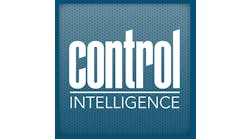Why machine builders must monitor vibration and corrosion
As remote monitoring became a reality, traditional process variables—pressure, temperature, level and flow—were obvious candidates for measurement. But monitoring capabilities continue to expand through wireless capabilities, PoE and energy harvesting for low-power sensors. Plants are awakening to the economic benefits of avoiding equipment downtime and mitigating the risk of environmental impact.
The ability to measure vibration and transmit that dense data and wireless accelerometers that enable balancing are major benefits to plants with rotating equipment. And efforts to protect vessels, vats, pipes and pumps from corrosion have accelerated the development of monitoring capabilities, as well. Our panel of nine industry experts explain how sensing technologies have brought remote monitoring of vibration and corrosion to the plant.
It seems the only limit to data is the device that collects it. What technology developments have expanded the abilities to monitor vibration, corrosion and other variables?
Weishung Liu is product planner at Fluke Industrial Group.
Jason Tranter, Mobius Institute: Wireless sensors and smart sensors that are able to measure, analyze, compress and communicate measurement and diagnostic information greatly increase the ability to monitor vibration and other parameters thanks in large part to the reduction in the installed cost.
Jason Tranter is founder and managing director of Mobius Institute.
Stew Thompson is technical writer at CAS Data Loggers.
Tim Senkbeil is product line manager, Industrial Connectivity Division, at Belden.
Mitesh Patel, TCS: Few things need to be processed onboard the measuring devices. If data can be transmitted to a remote location with high speeds leveraging technologies like IoT, the compute capacity available over cloud is virtually limitless. With the development in the space of mobility and IoT, small device with huge compute capacity are easily available at very affordable prices. Complex sensing like vibration, acoustics and vision, which were once a luxury to have, are now making their way into every possible application. Research in advanced sensing is making complex measuring possible. There is a lot been discussed about the ability to detect fatigue stress in mechanical components with minimal sensory devices attached to it. This has huge potential in industries such as aviation or asset-intense operations such as oil and gas.
Corrosion is another important area where sensing is possible. Today large and expensive equipment can have the ability to have built-in corrosion sensing. Alternatively, people use measuring devices for test purposes. A lot needs to improve, so that it will be possible to include built-in capability in a wide variety of applications.
Development in these areas are eased with the advent of edge-computing technology, but this also needs help from fundamental research around the physics and science of the phenomena being measured. Techniques for measuring corrosion potential, hydrogen flux monitoring or other forms of chemical analysis are commonly used in crafting non-intrusive corrosion detection, but this needs further development for sensors to be versatile.
Mitesh Patel heads Internet of Things for the manufacturing industry solution unit at TCS.
Joe Van Dyke is vice president of operations at Azima DLI.
Paula Hollywood, ARC Advisory Group: Information-driven manufacturing increases requirements for sensor-based data from manufacturing assets, resulting in a trend toward increased functionality at the sensor level, specifically increased signal processing capability, energy management, self-monitoring and miniaturization.. The simple sensors of the past have morphed into increasingly integrated and intelligent sensor systems, boasting hardware with ever greater capabilities. Sensors are increasingly able to perform correction computations, compensate for cross-sensitivity, provide application-specific algorithms, perform self-monitoring, and contain their own communication interface. Faster signal processing with lower noise levels and higher resolution consumes less energy and is suitable for operation in a wider range of ambient conditions. Of course, wireless communication technology enables installation of sensors in remote areas that have historically been cost-prohibitive to monitor.
Paula Hollywood is senior analyst at ARC Advisory Group.
Bob Drexel is product manager, process sensors, at ifm efector.
The growth of platforms are expanding the sensing capability of diagnostic measurement systems. If you were to take apart a system designed to measure vibration, one for motor current and one for shaft alignment, you would find many similar—not identical, to be sure—components. The platform approach looks at these solutions as dozens of discrete functions, rather than three unique devices. The common functions are grouped and shared to form the core of the platform while the unique functions are designed as modular hardware and software components. This makes it easier to expand systems with new measurements and capabilities because new design is reduced to the unique segmenting elements of the new capability, rather than a whole new design.
Brett Burger is principal marketing engineer at National Instruments.
Also read: Can I monitor and program using the same remote-access hardware or software?
Mike Bacidore is the editor in chief for Control Design magazine. He is an award-winning columnist, earning a Gold Regional Award and a Silver National Award from the American Society of Business Publication Editors. Email him at [email protected].
Homepage image courtesy of Suriya Kankliang at FreeDigitalPhotos.net















